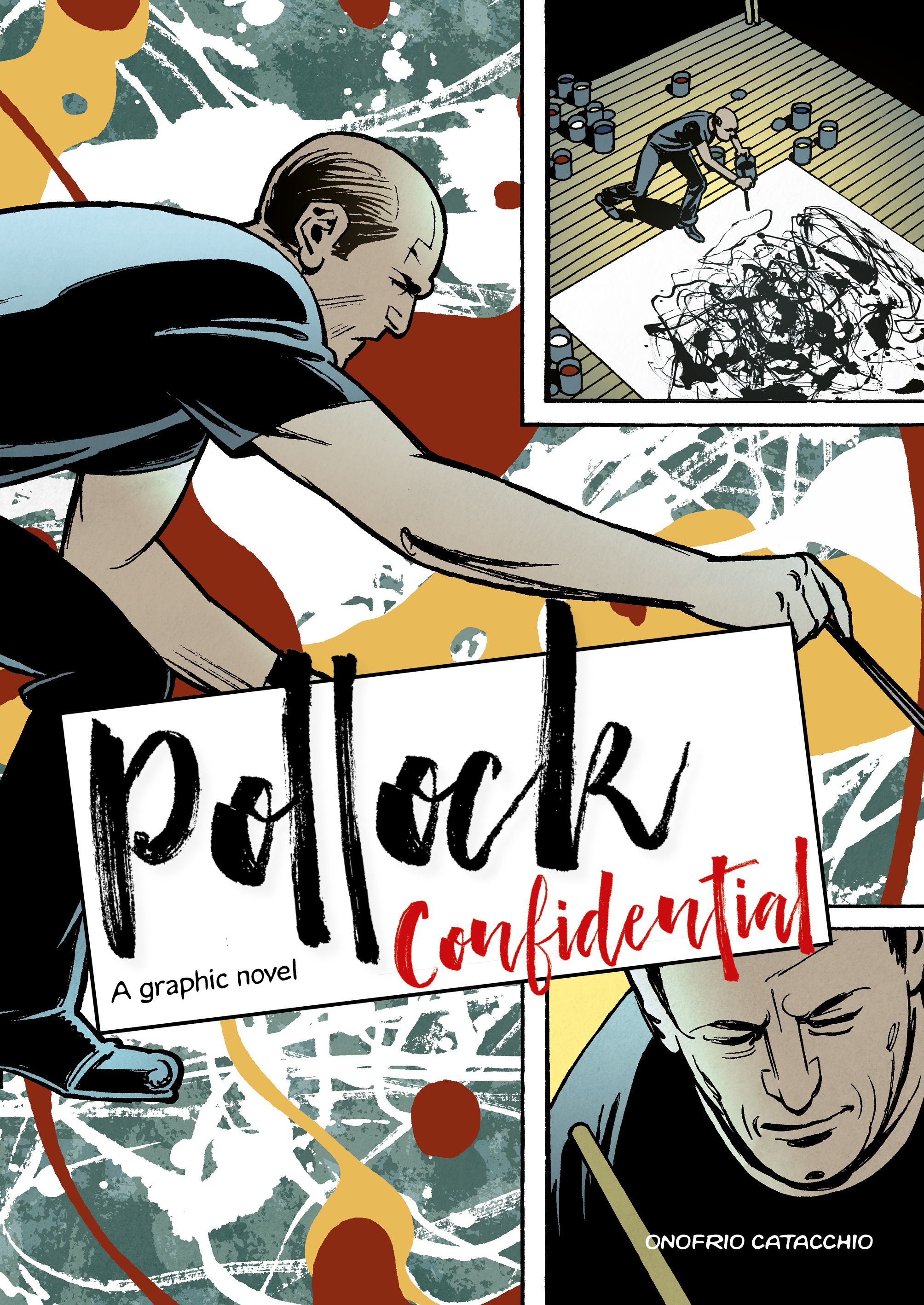Pollock Confidential Paints a Stark Portrait of the Cowboy of American Art
- WRITER
- Edward Fortes, Onofrio Catacchio
- Artist
- Onofrio Catacchio
- Letterer
- Onofrio Cattachio
- Cover Artist
- Onofrio Catacchio
- Publisher
- Laurence King Publishing
- Price
- 19.99
- Release Date
- 2020-05-12
- Colorist
- Onofrio Catacchio
The latest installment in Laurence King Publishing's series of graphic artist biographies, Onofrio Catacchio's Pollock Confidential -- translated from the original Italian by Edward Fortes -- explores the life of the late "Cowboy of American Art," Jackson Pollock. Written in a noir style, the book also examines the CIA's attempts to promote abstract expressionism as a means of fighting the influences of communism during the Cold War.
Pollock, who died at 44 years old in a single-car crash while driving under the influence, is known primarily for using the "drip technique" to pour or splatter paint onto a horizontal surface. He laid canvas on the floor and therefore could approach from any angle, walking around the canvas and frequently using a stick to paint, rather than a brush. He also used mixed media like sand, broken glass, or string. Though celebrated today, his work divided critics at the time: Some praised the immediacy of it and others derided how random it was.
Pollock Confidential is told through the perspective of Dan Adkins, an original character created by Catacchio. However, every other character is based on a real person and the events of the book are based on history. With the exception of just a few pages written for narrative reasons, all of Pollock's dialogue in the graphic novel comes from the artist himself. It's a rather remarkable achievement, not just as a graphic novel, but as a work of nonfiction.
Throughout the book -- which takes place primarily during Pollock's most productive years -- Adkins participates in Operation Long Leash, which was led by CIA Agent Tom Braden. Long Leash promoted abstract expressionism to prove that the United States was "the land of the free," in counterpoint to the artistic mandates handed down behind the Iron Curtain.
Long Leash was government-funded; money was funneled to Senator Rockefeller, who was president of the Metropolitan Museum of Modern Art. That money was then used to fund the work of abstract artists, without any of them ever knowing. Simultaneously, many of these artists held radical, anti-government views -- including Pollock, who was a communist sympathizer.
Pollock Confidential positions Adkins as a CIA agent tasked with tailing the artist in order to glean information about his creative process and his work. His assignment doesn't last long, though he's around Pollock long enough to see him featured in a major magazine and to see inside his studio, where Pollock paints canvases he spreads on the floor.
Because Adkins is learning about Pollock as he goes, Catacchio takes the reader on the same journey -- and in the end, very little is revealed about Pollock beyond what exists in official record. Still, the graphic novel humanizes him and provides just a brief glimpse into who he was behind the paint -- while also detailing a strange, secretive government operation.
Catacchio's storytelling is informative without being dry and his artistic style is clean and sharp, providing context for some of the most famous paintings in the modern art movement. Pollock Confidential is short, but fascinating, worth a read for anyone interested in art history, government conspiracies, or just really excellent writing and art.

